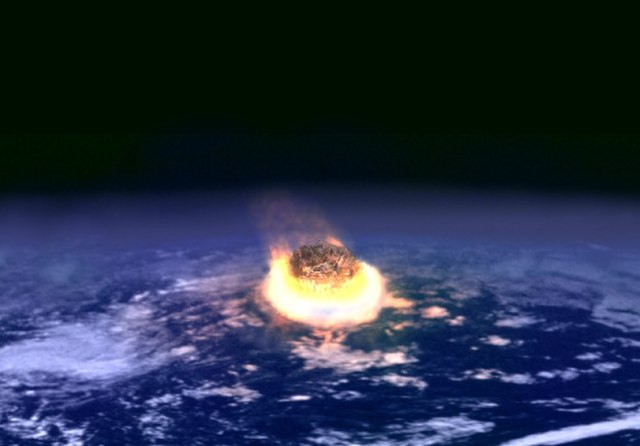
A leading scientist from NASA has raised concerns about the possibility of a gigantic asteroid hitting our planet. James Garvin, the chief scientist at NASA’s Goddard Space Flight Center, has warned that the danger posed by such an event is much greater than what we previously estimated.
During a presentation at the Lunar and Planetary Science Conference in the Woodlands, Texas, Garvin unveiled new findings which indicate that previous impact sites could be much larger than previously thought. Garvin expressed his worries, stating that if such an impact were to occur, it would be an incredibly serious event, said Science.org.
In addition, Garvin has suggested that each impact event in the past could have been much more powerful than we initially assumed.
The previous method of estimating the impact of an asteroid
As impact craters on Earth are usually erased quickly by water and wind, researchers rely on studying craters on the Moon to estimate the frequency of impact events on our planet.
Additionally, researchers study the size of asteroids in Earth’s orbit that have the potential to collide with our planet in the future.
Using these methods, scientists estimate that an asteroid or comet with a diameter of 1 kilometer or larger strikes Earth every 600,000 to 700,000 years.
The new research findings provide critical information that could help us reassess the role of these impacts in Earth’s recent history. The report states that the topographic data could also have significant implications for Planetary Defense.
NASA Study of four craters using new high-resolution images
Scientists believe devastating asteroid hitting the Earth is more likely than previously thought 👀 pic.twitter.com/Mhnn6xbtl9
— Daily Loud (@DailyLoud) March 21, 2023
To gain a better understanding of the craters formed in the past million years, researchers used new high-resolution images to study four craters – Pantasma in Nicaragua, Bosumtwi in Ghana, Iturralde in Bolivia, and Zhamanshin in Kazakhstan. The images were used to create three-dimensional maps of the craters.
James Garvin, who developed an algorithm for studying the surface of Mars, used this technique to analyze the topography of the craters. The algorithm identified a rim-like feature much further away than the previously assumed center of impact.
For instance, the Pantasma crater, which was believed to be 14.8 kilometers wide, was actually found to be 35.2 kilometers wide.
Disagreement by the scientists
Despite these findings, some scientists are not convinced that these craters pose a significant threat.
The features identified are so subtle that they do not necessarily indicate the presence of a large structural rim, said Gordon Osinski, a planetary scientist at Western University.
Planetary scientist Brandon Johnson from Purdue University suggests that the extensions identified in the research could just be debris from the impact.
However, Garvin disagrees and argues that the debris would not be so clearly visible after a million years of erosion. He also stated that “on Earth, things get messy, particularly when you throw a lot of energy at it.”
Despite the new findings, Garvin acknowledges that they have not yet proven anything and that more research is needed to understand the implications of the research.
See all the latest news from Greece and the world at Greekreporter.com. Contact our newsroom to report an update or send your story, photos and videos. Follow GR on Google News and subscribe here to our daily email!



